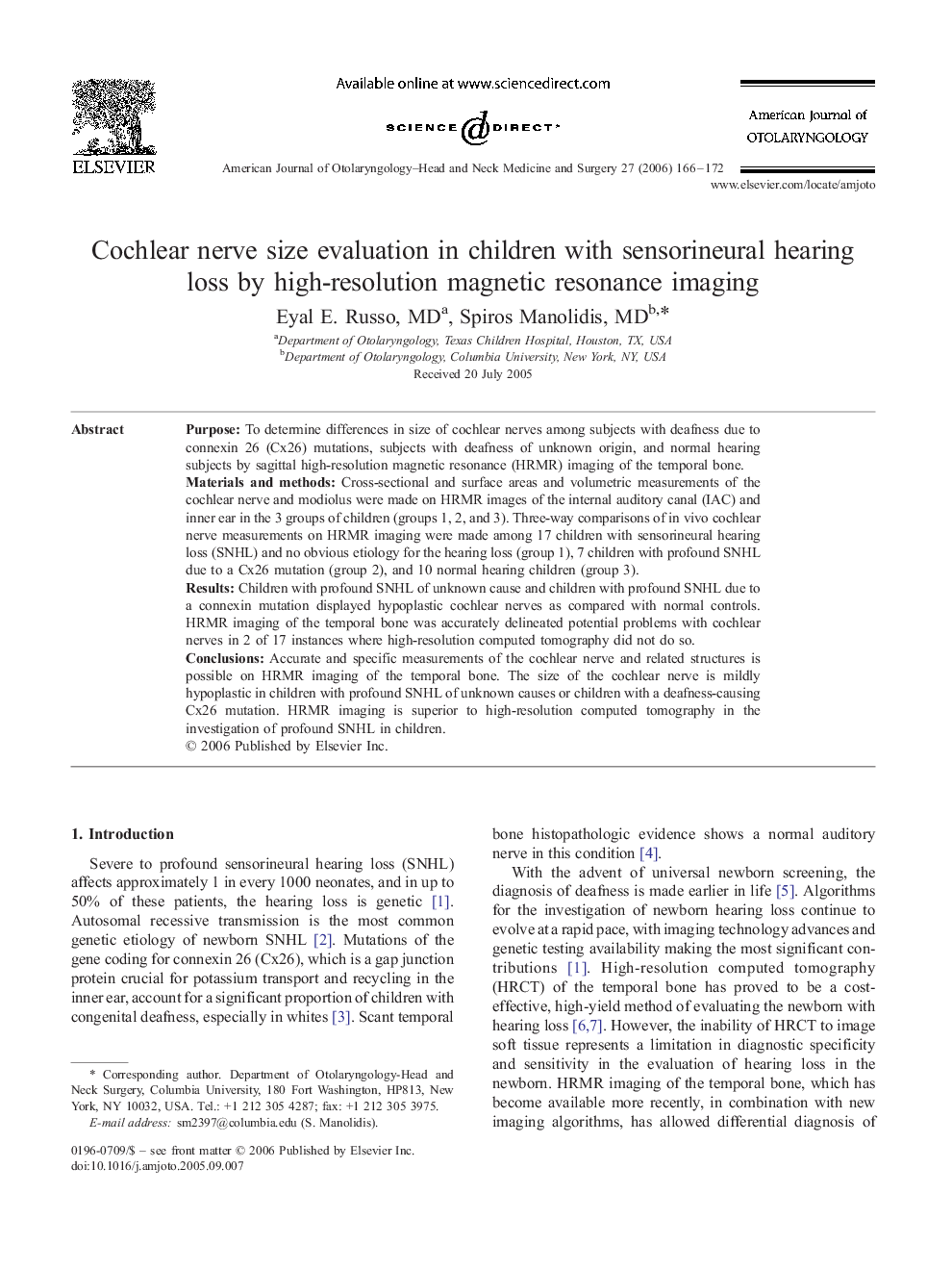| کد مقاله | کد نشریه | سال انتشار | مقاله انگلیسی | نسخه تمام متن |
|---|---|---|---|---|
| 4104610 | 1605291 | 2006 | 7 صفحه PDF | دانلود رایگان |

PurposeTo determine differences in size of cochlear nerves among subjects with deafness due to connexin 26 (Cx26) mutations, subjects with deafness of unknown origin, and normal hearing subjects by sagittal high-resolution magnetic resonance (HRMR) imaging of the temporal bone.Materials and methodsCross-sectional and surface areas and volumetric measurements of the cochlear nerve and modiolus were made on HRMR images of the internal auditory canal (IAC) and inner ear in the 3 groups of children (groups 1, 2, and 3). Three-way comparisons of in vivo cochlear nerve measurements on HRMR imaging were made among 17 children with sensorineural hearing loss (SNHL) and no obvious etiology for the hearing loss (group 1), 7 children with profound SNHL due to a Cx26 mutation (group 2), and 10 normal hearing children (group 3).ResultsChildren with profound SNHL of unknown cause and children with profound SNHL due to a connexin mutation displayed hypoplastic cochlear nerves as compared with normal controls. HRMR imaging of the temporal bone was accurately delineated potential problems with cochlear nerves in 2 of 17 instances where high-resolution computed tomography did not do so.ConclusionsAccurate and specific measurements of the cochlear nerve and related structures is possible on HRMR imaging of the temporal bone. The size of the cochlear nerve is mildly hypoplastic in children with profound SNHL of unknown causes or children with a deafness-causing Cx26 mutation. HRMR imaging is superior to high-resolution computed tomography in the investigation of profound SNHL in children.
Journal: American Journal of Otolaryngology - Volume 27, Issue 3, May–June 2006, Pages 166–172